
The Dave Brubeck Quartet
Time Out
Recorded June and August, 1959
Dave Brubeck, piano; Paul Desmond, alto saxophone; Eugene Wright, bass; Joe Morrello, drums
In last week's review, I made a disparaging reference to a certain white jazz group, and
I guess it's no secret that throughout the history of jazz, blacks have more often been the pioneers and refiners, and whites
the imitators and diluters. But that's not to say that there haven't been white jazz musicians who've made real contributions
to the form. This week's album, by the Dave Brubeck Quartet, is ample proof of that.
Time Out is something of an experiment: most of the songs are in unusual time signatures,
rather than the typical 4/4 of most jazz. The liner notes do a good job of breaking each song down and discussing
their theoretical aspects, so I won't repeat that here. It is a real tribute to the musicians, though, that the playing
on Time Out is so polished, so smooth, that a superficial listener might never notice the album's experimental
nature.
Its most famous song is Take Five, which has become a jazz standard, and one with such
anthemic power that it is even played by high school marching bands at football games. It is based around a minor-key
piano vamp that sounds almost Arabic in its hypnotic repitition. Paul Desmond's laid-back sax solo leads into
a remarkable drum solo in which Joe Morrello gradually works his way from playing in rhythmic union with the piano vamp to
playing in exact counter-point, and then finds his way back again.
Another highlight is the opening song, Blue Rondo a la Turk, which also has a sort
of Middle Eastern feel (the liner notes mention it is based on a Turkish folk rhythm), at least in its opening.
But then it segues unexpectedly into a cool, bluesy lounge number, before returning to the Turkish theme to finish.
Also outstanding is Kathy's Waltz, named for Brubeck's daughter, then a little girl. The sweet, simple
piano work at the beginning evokes a child playing quietly, while a second, more energetic piano solo later in the song takes
the girl outside for a romp. The final, unaccompanied piano then tucks the girl into bed as it softly fades
out.
The remaining songs are also enjoyable. Strange Meadow Lark is a bright, mid-tempo
number that Desmond solos on with special expressiveness. Eugene Wright plays a repeated, loping 6-note bass figure
on the song Pick Up Sticks, providing a driving propulsion for productive solos by Desmond and Brubeck.
Brubeck here displays an interesting technique that he also uses to good effect in Three to Get Ready in which
he plays a long melodic figure using single notes, then repeats it with sparse chords, and finally repeats it with full block
chords, nicely building dramatic tension. On Everybody's Jumpin', Morello takes a masterful
drum solo that is so colorful it is almost melodic.
Time Out is an album that is completely accessible to jazz newcomers, but sophisticated
and innovative enough to reward listenings by long-time aficionados. On a purely emotional level, I
am struck every time I hear it at just what a pleasure Time Out is to listen to.
Grade: A
(Reviewed 3/7/04)
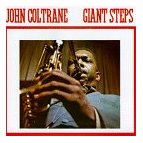
John Coltrane
Giant Steps
Recorded May 4 and December 2, 1959
John Coltrane, tenor saxophone; Tommy Flanagan, piano; Wynton Kelly, piano on Naima; Paul Chambers, bass;
Art Taylor, drums; Jimmy Cobb, drums on Naima
Giant Steps is aptly named, for it came at a point in John Coltrane's career when he
was beginning to free himself from the song structures and harmonic limitations of jazz of that time. His saxophone
had always had a probing, searching quality, and a freer style of playing allowed him here to explore jazz with a new
urgency.
The title track opens with a medium tempo and a simple, bluesy theme, but Coltrane soon launches
into an intense, fast-paced solo with bursts of notes falling all over each other to fly out of his saxophone. Tommy
Flanagan maintains the intensity with a staccato piano run, followed by a hard-charging bass solo from Paul Chambers,
the first of several excellent bass solos on the album. Giant Steps then closes with a re-statement of the
theme and a saxophone cadenza.
Cousin Mary slows the pace a bit for some low down hip shakin'. The simple,
three note sax theme sounds to me for all the world like a man's "mmm, mmm, mmm" while watching a sexy, uninhibited woman
on the dance floor. (The liner notes suggest the adjective "earthy" to describe the song.) Similarly sensual
is the ballad Naima, named for Coltrane's wife, with slow, suggestive solos by Coltane and pianist Wynton
Kelly.
Another song named for a woman in John Coltrane's life is in an entirely different vein, however.
Syeeda's Song Flute, named for his then 10-year old daughter, is a playful song that makes for a nice break
from the intensity of the rest of the album. Tommy Flanagan's frolicking piano solo here is especially delightful.
The title of the song Spiral is accurate, for its theme is a repeated, descending pattern
of notes that indeed sounds like a musical spiral. The theme alternates throughout the song with solos by Coltrane,
Flanagan, and Chambers. Countdown opens with a drum solo, then Coltrane's saxophone enters with an
urgent solo played at breakneck speed. The piano enters at 1:15 into the song, and the bass at 1:54.
Then, after all the instruments have entered, the countdown is complete, and we hear the theme of the song played at the very
end. The final song is Mr. P.C. (a salute to bass player Paul Chambers), a fast-paced song with a
heavy, note-dense bass line. It has fine solos by Coltrane and Flanagan, although strangely not one by Paul Chambers
himself.
John Coltrane tends to generate either adulation or revulsion among jazz listeners, with seemingly
not much room for middle ground. I admit that I fall into the former camp, and Giant Steps is my favorite Coltrane
album. If not quite as intensely spiritual as some of his later albums, neither does it suffer from their self-indulgences.
There is not a weak song, or even a weak moment, on it, and Coltrane's muscular solos are supported by expert playing by his
sidemen throughout. I highly recommend Giant Steps for novice listeners who already have a few jazz albums
under their belts and are willing to try something a little more challenging.
Grade: A+
(Reviewed 4/18/04)
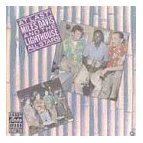
Miles Davis and the Lighthouse All-Stars
At Last!
Recorded September 13, 1953
Miles Davis, trumpet; Rolf Ericson, trumpet; Chet Baker, trumpet on At Last; Bud Shank, alto
and baritone saxophone; Bob Cooper, tenor saxophone; Lorraine Geller, piano; Russ Freeman, piano on At Last; Howard
Rumsey, bass; Max Roach, drums
Up until now, my reviews have been limited to some of jazz history's absolute classics.
But it's possible to learn as much from a bad album as a good one, so in that spirit I turn to Miles Davis and the Lighthouse
All-Stars At Last.
The Lighthouse All-Stars were the house band at the Lighthouse Club in Hermosa Beach, California,
a mostly-white group that, if these songs are typical, played fairly mediocre versions of jazz standards. However,
famous jazz musicians, black and white, would sometimes drop in when they were in California. This particular week,
Max Roach began a short run in the drummer's slot at the Lighthouse, and he brought along his friend Miles Davis for a set.
The result is underwhelming. The first song, Infinity Promenade, illustrates
the album's problems. The horn solos are mostly aimless, consisting of strung-together clichés, while Miles's solo in
particular sounds wan. (The liner notes mention that he was playing a borrowed trumpet!) Geller's piano is a sort
of heavy-handed boogie-woogie that threatens to deluge the other musicians. While Roach's drumming is generally competent,
there are still parts when his unfamiliarity with the band shows. Aside from a certain lack of anticipating
the others' moves, he also tries too hard to make every moment colorful when the song might have benefited from holding back
a little.
Round Midnight and Night in Tunisia are similar debacles, although I will
admit that Bud Shank has a nice solo on Tunisia. Showing the others how it should be done, he builds clear
statements on his saxophone into a cohesive structure that complements the song. Drum Conversation consists
entirely of a drum solo by Roach, and is nothing more than a vehicle to show off his technique, with no real musical interest.
The final song is apparently from another set, with Chet Baker replacing Miles on trumpet. Baker, at that time a rising
star on the West Coast scene, leads the band in At Last, a modest but nicely-done little ballad.
In a way, reviewing At Last is a little unfair, as the ad hoc nature of the
date is obvious. But it is something that one might come across in the CD racks, and be tempted to buy
thanks to Miles's name. While not horrible, I can't recommend it, except perhaps as a historical curiosity for those
interested in this early period of Miles Davis's career, after he had broken his heroin addiction in the early 1950s but before
his comeback in the middle of the decade. Otherwise, At Last is forgettable.
Grade: D+
(Reviewed 2/29/04)
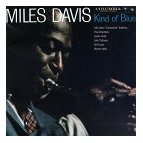
Miles Davis
Kind of Blue
Recorded March 2 and April 22, 1959
Miles Davis, trumpet; Julian "Cannonball" Adderley, alto saxophone; John Coltrane, tenor saxophone; Wynton Kelly, piano
on Freddie Freeloader; Bill Evans, piano on all other songs; Paul Chambers, bass; Jimmy Cobb, drums
I'll come right and say it: I don't think Kind of Blue is the greatest jazz record of
all time. It's not even in my top five. Now, that puts me at odds with a great many critics, not to mention the
public, which has conspired in its masses to make this the best-selling jazz album ever. But, having said that, I do
think this is an excellent album, and it is one that I revisit often.
One thing that makes Kind of Blue great, as well as an ideal record for a new jazz
listener, is that it includes the late Miles Davis, John Coltrane, and Cannonball Adderley. Each of these three musicians
combined strong, distinctive personalities with an ability to distill those personalities into their music.
The first song, So What, demonstrates what I mean nicely, with Miles opening with a cool, subdued, almost
aloof solo; Coltrane following with his typical intense, searching bursts of notes; and finally Cannonball, with a solo as
gregarious, warm, and good-natured as the man.
The bluesy Freddie Freeloader and All Blues showcase the three horn-players'
complementary playing to similar effect. But there is a fourth personality who I have not yet mentioned: pianist Bill
Evans. His spare playing provides crucial color behind the horns throughout the album, while his little interludes between
the horn solos on the ballad Blue in Green and his solo on Flamenco Sketches are so delicate and exquisite
that a careless listener might overlook them--but that would be a shame.
It's worth pointing out that Flamenco Sketches prefigures Miles's great
album of the following year, Sketches of Spain. I don't know how true to authentic flamenco this song is, but
its chord progression gives it a definite Spanish feel. My particular CD version of Kind of Blue is a 1997
remastering that includes an alternate take of Flamenco Sketches which I think is actually a little superior
to the official take, with Cannonball's and Evans's soloes in particular being more expressive on the alternate take.
I've spent some time agonizing over how to grade this album, for it is flawless in a technical
sense and features some extraordinary playing. And yet, there is no song on the album that I really find deeply meaningful.
Miles wrote all five songs only hours before the musicians met for the two recording sessions, and all but Flamenco Sketches
were done in one take. I detect a little tentativeness in the album's deliberate pacing and in some of the solo work.
I wonder if a little more familiarity with the material might not have helped? In any case, Kind of Blue is
a fine album, and most listeners will enjoy it immensely.
Grade: A-
(Reviewed 2/22/04)
|
 |
|
|
|
 |
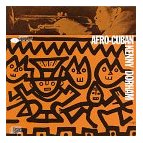
Kenny Dorham
Afro-Cuban
Recorded January 30 and March 29, 1955
Kenny Dorham, trumpet; Jay Jay Johnson, trombone; Hank Mobley, tenor
saxophone; Cecil Payne, baritone saxophone; Horace Silver, piano; Oscar Pettiford, bass (Cuban tracks); Percy Heath, bass
(other tracks); Carlos "Potato" Valdes, conga (Cuban tracks); Art Blakey, drums
Kenny Dorham's Afro-Cuban is really
like two albums: one smoldering album of Cuban numbers, and one album of more straight-ahead jazz.
The first half guest-stars congaist Carlos "Potato"
Valdes, who, together with drummer Art Blakey, lays down dense, sophisticated rhythms on four Cuban-influenced tracks.
The first song is Afrodisia, an upbeat party-starting sort of song with a hypnotic bass line and a theme that
will remind listeners of Tequila!, although it precedes that Champs pop instrumental by three years. Minor's
Holiday (named for trumpeter Minor Robinson, although the song is also in a minor key) is aggressively paced, with more
great percussive work, and an especially sultry solo by Kenny Dorham. Basheer's Dream is in the same vein,
with Hank Silver providing some nice color on the piano throughout the song. Finally, the group slows thing down for
Lotus Flower, a lush ballad with a langorous melody. All the horn players take memorable solos on these
first four songs, although special mention must be made of the consistently lyric work of trombonist Jay Jay Johnson.
The second half of the album is without Potato's
congas, and consists of four fairly straight-ahead jazz songs. Although competently played, the songs are pedestrian
and seem to exist solely to round out the album's playing time. I have many times tried to decide if the songs are
really so bad, or if it is just the contrast to the searing rhythms and horn work on the album's first half that make
them seem that way. After listening to the album again for this review, I came to the conclusion that it's not the contrast;
the songs are boring in their own right. The only one that stands out at all is La Villa, driven by Blakey's
typical powerhouse drumming, with a jagged, energetic trumpet solo by Dorham and also featuring nice solos by Hank Mobley
and Cecil Payne. K.D.'s Motion, Venita's Dance, and K.D.'s Cab Ride are bland and just sort
of fade into the background.
Assigning a grade to Afro-Cuban
is a challenge, considering the different natures of the two halves of the album. It seems most fair to grade
each part and then take the average. To the sensationally sweaty first half, I give an A-, and to the mediocre second
half, a C-, for a final grade of B-.
Grade: B-
(Reviewed 5/23/04)
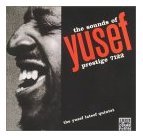
Yusef Lateef
The Sounds of Yusef
Recorded October 11, 1957
Yusef Lateef, tenor saxophone, flute, argol, tambourine; Wilbur Harden, flugelhorn and balloon; Hugh Lawson, piano, bells,
7-Up bottle, Turkish finger cymbals, balloon; Ernie Farrow, bass and rabat; Oliver Jackson, drums and percussion
I decided to dig a little deeper in my collection for this week's review, and came
out with The Sounds of Yusef, an interesting album on which Yusef Lateef and his band employ some unusual
instruments, including both exotic instruments from India and China, as well as everyday objects not normally thought of for
their musical properties.
The best song is Meditation, a smoky ballad which after a dramatic opening with a Chinese
gong and some sort of reed instrument (perhaps the mysterious argol listed as one of Lateef's instruments?), wisely proceeds
with more standard jazz instruments. Lateef turns in a solo on the tenor saxophone that really reflects the song title,
putting an image in my mind of a man walking abandoned streets at night with only his thoughts to keep him company.
The opening song, Duke Ellington's classic Take the A Train, is also done
well. (Listen to this site's theme music for a MIDI version of the song.) Lateef and Wilbur Harden play the famous
piano intro on flute and flugelhorn, respectively, while the flute then carries the song's main theme. Everybody takes
a solo, with Lateef's being especially memorable. He displays his technique of playing the flute by humming rather
than blowing, giving the flute a growl that he uses here to good effect.
Another enjoyable number is Buckingham, which is simply straightforward jazz
with Lateef on saxophone and brief, effective soloes by all.
Playful Flute features Lateef's flute, this time over Turkish finger cymbals and a
rabat, which is not described in the liner notes but sounds something like a conga. There is no chord structure, just
an unfocused but happy little flute solo that ends before it can wear out its welcome. The same cannot be said
for Love and Humor, which starts off intriguingly with Hugh Lawson providing a sort of bass line by blowing over
an empty 7-Up Bottle like he was in an old-time jug band, and Yusef repeating an "Eastern" theme on his flute.
However, Harden and Lawson enter with soloes played on balloons, produced both by squeezing the air
out and by rubbing their surfaces. While I must admit that they get more melody out of the balloons than one would
think possible, they still exhaust the balloons' expressive range pretty quickly, and the song reaches the truly annoying
point long before it ends.
I admire Yusef Lateef for his willingness to try out new instruments and sounds in his
music. Unfortunately, I don't think the band is able to fully integrate their exotic instruments into
a jazz setting. Even so, except for one song, The Sounds of Yusef is a fun and quite listenable album.
Grade: B-
(Reviewed 3/28/04)
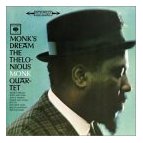 Thelonious Monk
Monk's Dream
Recorded October 31 and November 1, 2, and 6, 1962
Thelonious Monk, piano; Charlie Rouse, tenor saxophone; John Ore, bass; Frankie Dunlop, drums
It's been said that much of J.S. Bach's music is like working out a math equation, presumably
in the sense that each note and chord follow in precise progression until they finally arrive at the inevitable
conclusion. If that's so, then Thelonious Monk's music is more like a brain teaser. Notes and chords in
a Monk song answer the question, "What is the least expected thing that can be played here that would still fit?"
I hope that doesn't make it sound like Monk's music is in anyway unmelodic, for just the opposite
is the case. But his playing is a little loopy, with all sorts of trills and glissandi, rhythmic pauses and ellipses,
and sudden dissonances that resolve themselves in surprising ways.
This loopiness is especially evident on the title track, Monk's Dream, and the upbeat
Bright Mississippi, which also features a nice extended sax solo by Charlie Rouse. Five Spot Blues
and Bolivar Blues are solid mid-tempo blues numbers, while Sweet and Lovely is a slower song that is,
well, sweet and lovely, if not too memorable. Less interesting are the by-the-numbers mid-tempo Bye-ya, and
Body and Soul and Just a Gigolo, two solo piano tunes that are pleasant but slight.
All in all, Monk's Dream is enjoyable, though not quite as inspired as some of Monk's
other albums.
Grade: B
(Reviewed 2/15/04)
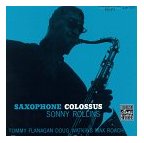
Sonny Rollins
Saxophone Colossus
Recorded June 22, 1956
Sonny Rollins: tenor saxophone; Tommy Flanagan: piano; Doug Watkins: bass; Max
Roach: drums
This album is one of the all time greats. There
are a number of reasons I have chosen it for my first review. For one, it is an absolute classic and essential
to any serious jazz collection, but the music is also easily accessible to a new listener. It is also one of my personal
favorites.
For me, the highlight of the album is You Don't Know
What Love Is, a ballad. Outside of Duke Ellington's songbook, this song is more purely "jazz" than any other I
can think of. Rollins's saxophone playing here is smoky and noir-ish, evoking images of lonely souls walking down rain-soaked
streets.
Blue 7 is another stand-out. It is a blues song
that is deep and complex, though it is built out of a relatively simple melody and rhythm (da-da-da swish, da-da-da swish).
Max Roach's drum solo here is really memorable, alternating bars between interesting variations on the rhythm and colorful
fills.
St. Thomas has a West Indies feel, with a joyful solo
by Rollins and more great drumming by Roach. Strode Rode is a hard-charging number with fine work by all
the players. The only weak spot on the album is Moritat, whose melody will be better known to listeners as
Mack the Knife. I don't feel that Rollins has a lot to say on this song, and at slightly over 10 minutes, the
conversation goes on too long. There is some nice interplay, however, between Doug Watkins and Tommy Flanagan during
the bass solo.
Overall, an extremely strong album with a good balance of songs
and moods, excellent playing, and only one weak spot, which I don't feel is fatal.
Grade: A
(Reviewed 2/8/04)
|
 |
|
|
|

